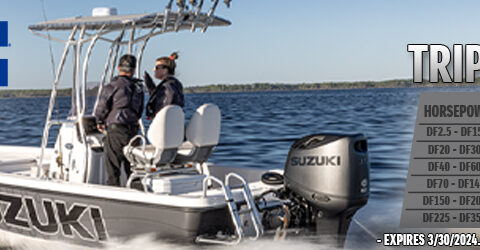A Primer on Docking
Of all the maneuvers that boaters have to perform, bringing a boat into a narrow slip or parallel to a dock is the one that causes the blood pressure to increase the most! Especially if one’s friends are watching from the balcony of the yacht club.
Docking does not have to be difficult. It can be a little tricky, especially if there are high winds or currents to deal with. But with a little preparation and knowledge of how best to handle your boat, it really isn’t that difficult. Here are some tips on docking every captain should know.
- Prepare for landing. Before you arrive at your slip or dock, take a few moments to get ready. Tell your passengers (and crew) what you intend to do. Put out fenders to protect your boat from contact with the dock. (Big boats might require ball fenders, smaller vessels can usually do with 15- or 18-inch fenders.) Make sure dock lines are cleated and ready: most boats will use bow and stern lines as well as a spring line, usually cleated in the middle of your boat.
- Have your strategy in mind. If docking at a familiar place, you probably know the wind and tide conditions. If coming into a new location, take a moment or two to judge the current conditions: which direction is the wind blowing, and how will that affect your boat when you glide slowly into place? Are there tides or currents running? How fast, and what direction? All these data points will help you determine the proper angle of approach and what might happen when you get close to the dock.
- Power down. Excess speed when docking will always lead to trouble. The old adage is never approach a dock at a speed greater than if you were planning to hit the dock. Which means: slowly. Most captains agree that the best way to maneuver near the dock is by short bursts of power, rather than constant forward or backward movement. Get your boat so that it’s barely moving when approaching the dock, and add a momentary nudge forward or backward as necessary.
- Dock the middle, first. The best way to land at the dock is to bring the middle of your boat next to the dock first. You can then connect a spring line to the dock cleat and, if necessary, back down or add a forward nudge to bring the bow or stern in to follow. You will find that if you tie up the bow or stern first, your boat will be harder to control.
- Low speed control. When your boat is barely moving, it can be harder to control. The best way to maintain control is to first turn the wheel and then add power. This will help you control the swing of either the bow or stern so you can line up the middle of your boat with the cleat on the slip.
- If at first … Hey, nobody is perfect all the time. Tom Brady threw a lot of incomplete passes. Baseball players make an out six or seven times out of ten at-bats. And low-speed maneuvers in windy conditions can be tricky. So if you find yourself out of position in your docking strategy, don’t be afraid to go around. Tell your crew that this approach isn’t working and motor out into the freeway and try again. It happens to all of us from time to time.





